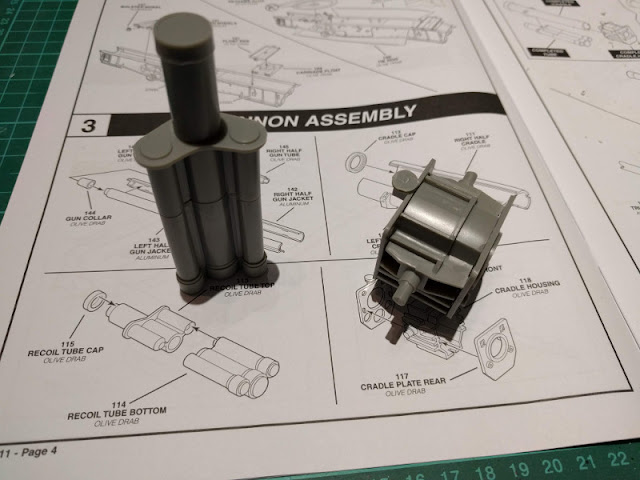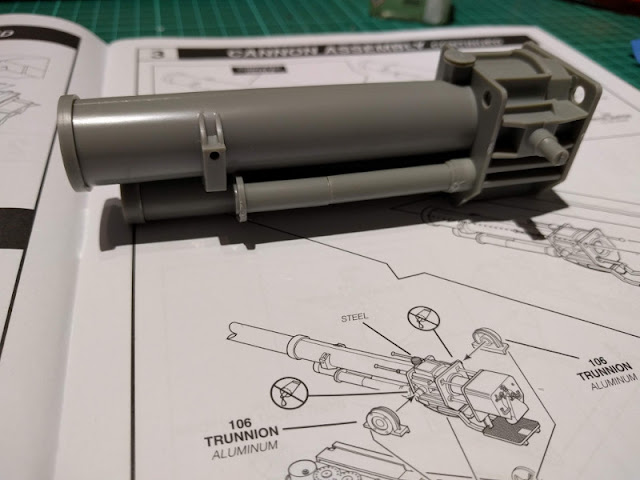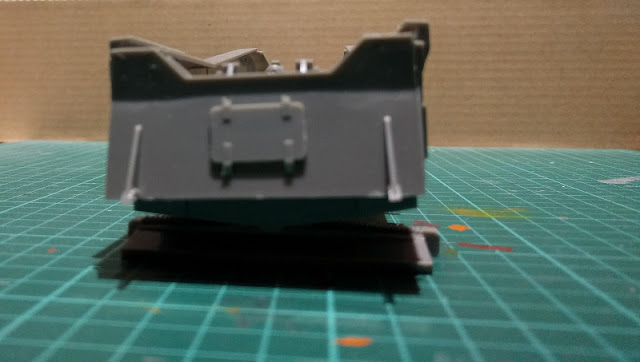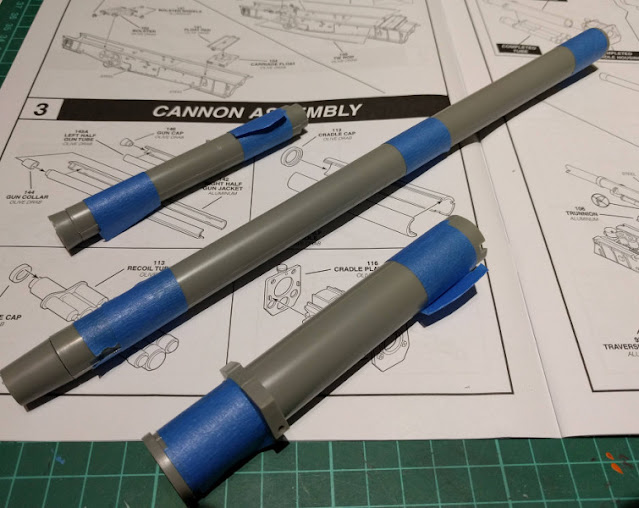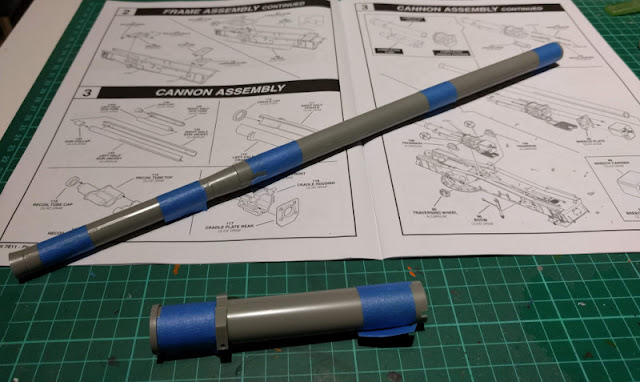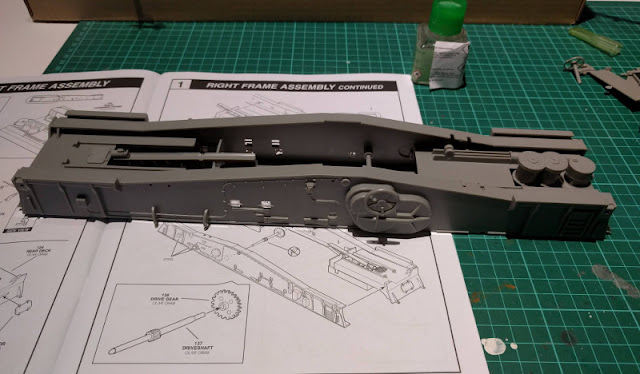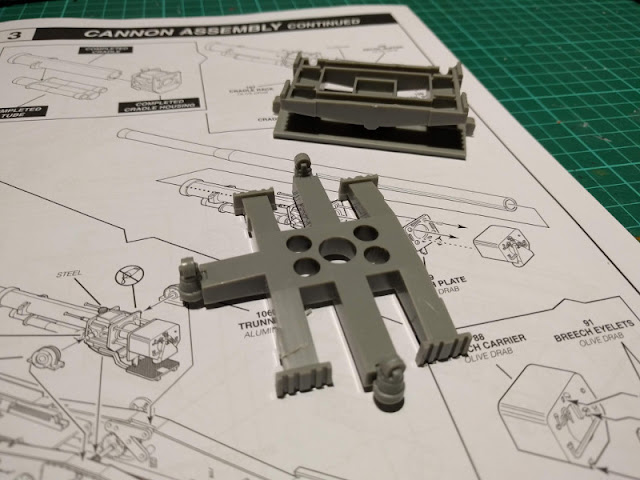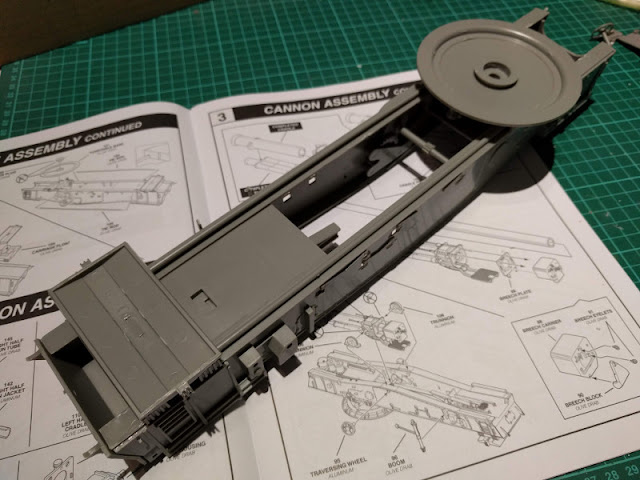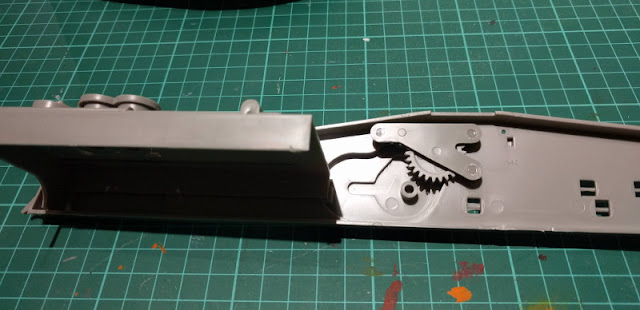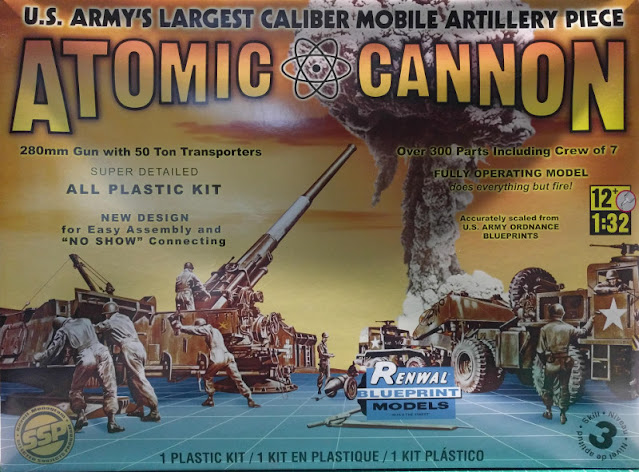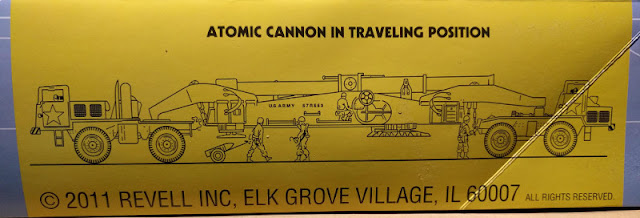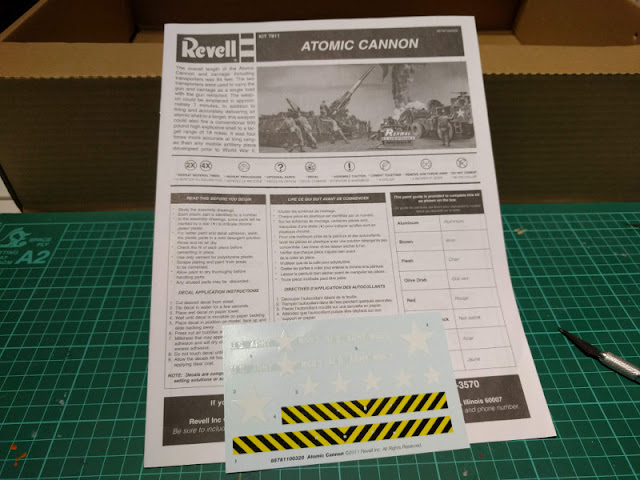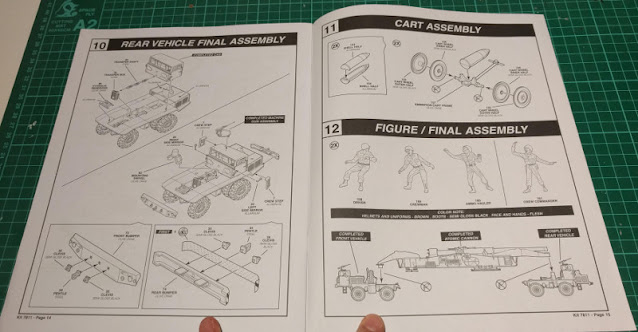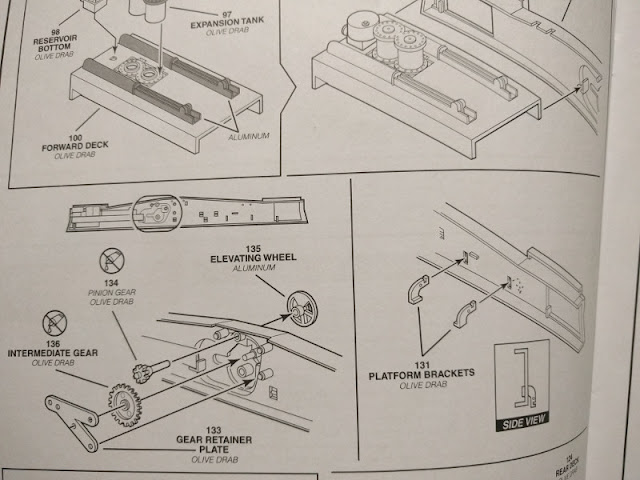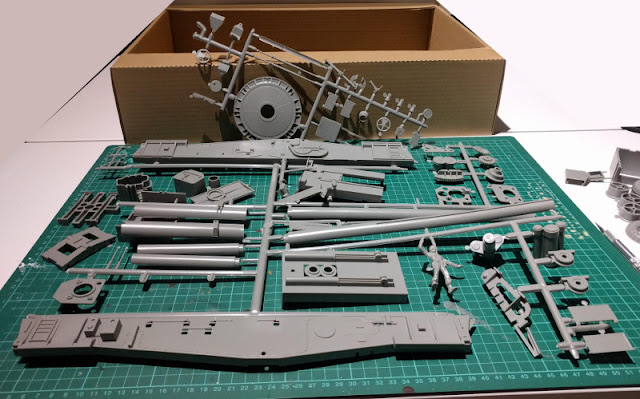M65 Atomic Annie
Again, after a good amount of pondering I chose the M-65 Atomic Cannon as my next project. According to the claims a weapon of this sort has been fired only one time, ever. Or at least its namesake special ordnance has been fired
once, but one would assume that before that one shot at least
one normal grenade has been propelled through the barrel.
The box
The Atomic Cannon's box was ridiculously large. Its cover art was somewhat different from what the typical ones have been during my years looking at them. This appeared to be Renwal's style before it got bought out by Revell, based on a quick image search.
Papers, please
Decals were pretty simple, I thought I could even use the 'murican stars but the caution stripes would be so much better if just painted on the vehicles. Maybe this was partially my own disgust towards the decals as a medium, mixed in with my fear of those damn things going all spaghetti when applying them on anything. A huge effect has come from the fact that I have enjoyed painting and weathering a painted on detail has worked better than a brighter, higher-contrast decal.
The instructions themselves were pretty nicely sectioned so I didn't need to guess what I was working on at any given point. In the second pic you could see an interesting detail that I couldn't recall seeing anywhere before: it named each subcomponent. This was exactly what I had wished to see in the airplanes, for example, and some more random projects than plain old tanks.
Bits and pieces
There were, like the box said, a couple of hundred pieces to enjoy. To my great joy I found that a decent amount of said pieces were loose inside the box, torn out of their sprues over the years and kilometers. So an amount of the project time was going to be dedicated to finding out loose pieces. The numerous tire halves were at least pretty self-evident, but the rest...
The six-person crew consisted of single-piece humanoid males from the sixties. Maybe I'd paint them for a photo, but one couldn't do much dynamic things with these.
From this next set I had some difficulties in guessing which may have belonged to the carriage and which maybe to the vehicles, if the most obvious ones were ignored. These pieces were numbered, which was technically nice, but in practice reading the tiny numbers (where they hadn't fallen off) was a bit challenging sometimes - or my eyes were awful (also true).
The cannon's carriage was ridiculously large, but I guess it had to be, if the barrel's diameter was 280mm. At this point I was just guessing which set of sprues were prodiving which part of the build, more or less, so my comments may have also been totally off.
